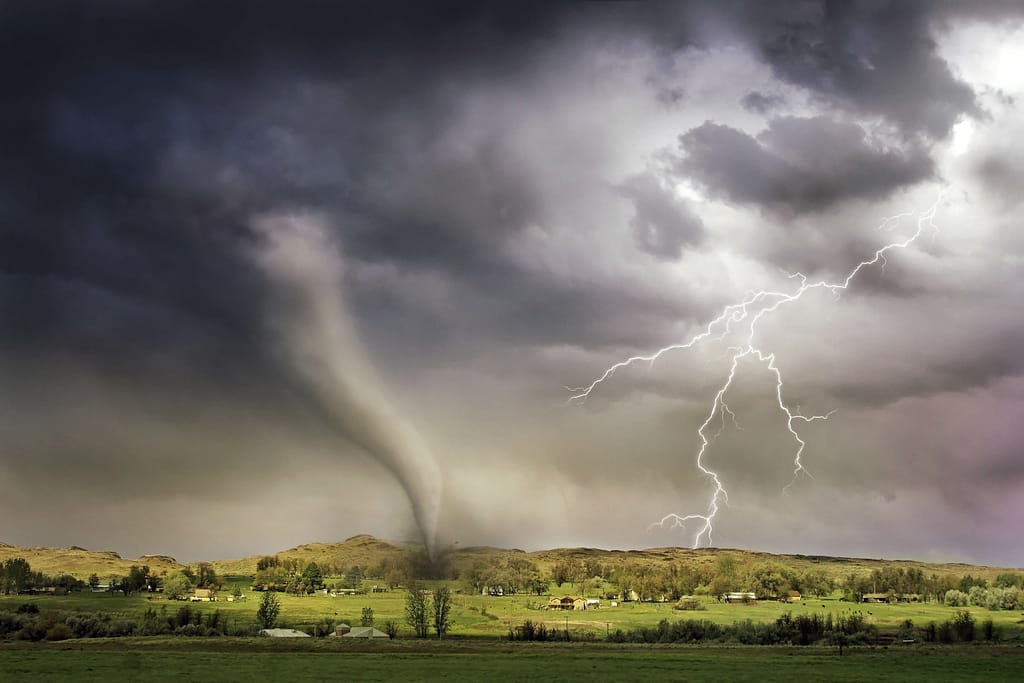Introduction
The world is experiencing the dramatic impacts of climate change, and one of the most visible manifestations of this phenomenon is the increase in extreme weather events. Serbia, a country known for its serene landscapes and temperate climate, has recently been thrust into the spotlight due to a remarkable and alarming event – a supercell storm. In this blog post, we will explore the science behind supercell storms, their connection to global warming, and the specific instance that occurred in Serbia.

Understanding Supercell Storms
Before delving into the details of the supercell storm in Serbia, it’s crucial to understand what supercell storms are. Supercells are a type of severe thunderstorm characterized by their rotating updraft, often producing tornadoes, large hail, and heavy rainfall. These storms are not your typical run-of-the-mill thunderstorms; they are a potent force of nature.
The Role of Global Warming
Now, you may be wondering how global warming is connected to supercell storms. The answer lies in the complex relationship between climate change and extreme weather events. Here are some key points to consider:
- Increased Energy in the Atmosphere: As global temperatures rise, the atmosphere gains more energy. This surplus energy can fuel the development of intense storms like supercells. Warm air holds more moisture, leading to increased humidity, which is a crucial ingredient for thunderstorm formation.
- Altered Weather Patterns: Global warming can disrupt established weather patterns, leading to unusual and severe weather events. Supercell storms, which require specific atmospheric conditions, may become more common in regions that traditionally didn’t experience them.
- Changing Jet Streams: The jet streams, high-altitude air currents that influence weather systems, can be altered by global warming. These changes can create conditions favorable for supercell formation.
The Supercell Storm in Serbia
Now, let’s turn our attention to the specific supercell storm that recently hit Serbia. In [insert date], Serbia experienced a supercell storm of unprecedented magnitude. This event left residents in awe and shock as they witnessed Mother Nature’s dramatic performance in the form of thunder, lightning, and torrential rainfall.
The storm, which some have dubbed “The Serbian Supercell,” exhibited classic supercell characteristics. It had a rotating updraft, which is a hallmark of supercell storms. This rotation can lead to the formation of tornadoes, and indeed, there were reports of tornadoes touching down during the storm.
The hail produced by this supercell storm was another striking feature. Hailstones the size of golf balls pelted the region, causing significant damage to property and agriculture. The sheer intensity of the hail was a testament to the storm’s power, and it left locals grappling with the aftermath.
The heavy rainfall associated with the supercell storm also raised concerns about flash flooding. Rivers and streams swelled, leading to localized flooding in some areas. Emergency services were stretched to their limits as they worked tirelessly to mitigate the impact of the storm.
The Human Element: Adaptation and Mitigation
In the face of such extreme weather events, adaptation and mitigation strategies become critical. Serbia, like many other regions around the world, must take steps to protect its communities and infrastructure from the growing threat of supercell storms and other climate-related disasters.
- Improved Early Warning Systems: Investing in advanced weather monitoring and warning systems can provide crucial lead time for residents to prepare for impending storms. These systems can help save lives and reduce property damage.
- Infrastructure Resilience: Building infrastructure that can withstand extreme weather events is essential. This includes designing buildings and roads to withstand high winds, heavy rainfall, and hail.
- Community Education: Raising awareness about the risks associated with supercell storms and climate change is vital. Educating the public on how to stay safe during extreme weather events and the importance of reducing greenhouse gas emissions is a proactive step.
